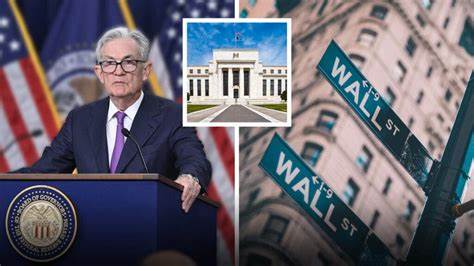In recent times, the trajectory of inflation has taken unexpected turns, catching the attention of the Federal Reserve and prompting a reassessment of its stance on interest rates. Michael Gapen, the U.S. economist at Bank of America, has provided illuminating insights into the upcoming Federal Open Market Committee (FOMC) meeting and the subsequent interest rate decision, shedding light on the evolving policy landscape in response to inflationary pressures.
Bank of America’s stance has shifted significantly over the past month in response to inflationary dynamics. Initially projecting three rate cuts, the bank has now revised its forecast to anticipate only a single reduction, slated for December 2024. This adjustment reflects a recalibration in response to prevailing market sentiment, with expectations leaning towards a more tempered approach to rate adjustments in the near term.
Gapen’s revised terminal rate projection, ranging between 3.5% and 3.75% for 2026, underscores a sobering realization: the pace of disinflation may be slower than previously anticipated. This adjustment signifies a cautious approach, acknowledging the persistent inflationary pressures that warrant careful monitoring and nuanced policy responses.
The central message expected from the FOMC meeting is a call for patience, emphasizing the need for policy measures to be given more time to take effect. Fed Chair Jerome Powell has underscored this sentiment, emphasizing the importance of data and the evolving economic outlook in guiding future policy decisions.
Despite recent inflation data, including the March Personal Consumption Expenditure (PCE) price index, failing to assuage concerns about disinflation, the Fed remains committed to a data-driven approach. The unexpected firmness in inflation metrics has complicated the possibility of rate cuts in the near term, necessitating a cautious and deliberate response from policymakers.
Looking ahead, Bank of America does not discount the possibility of the Fed considering rate hikes if inflationary pressures persist or if inflation expectations rise. However, Gapen emphasizes the importance of prudence, advocating for a reduction in the number of rate cuts in response to potential overheating in the economy.
In terms of the Fed’s balance sheet, Bank of America anticipates an announcement during the May FOMC meeting regarding tapering the balance sheet runoff. This strategic move would involve reducing the maximum monthly redemption cap on maturing Treasury securities, signaling a gradual normalization of monetary policy.
Overall, the evolving inflationary landscape and the Fed’s response underscore the complexities inherent in navigating monetary policy decisions. As the Fed grapples with balancing economic growth and inflationary pressures, careful monitoring of policy developments will be crucial in assessing their impact on financial markets and the broader economy.
